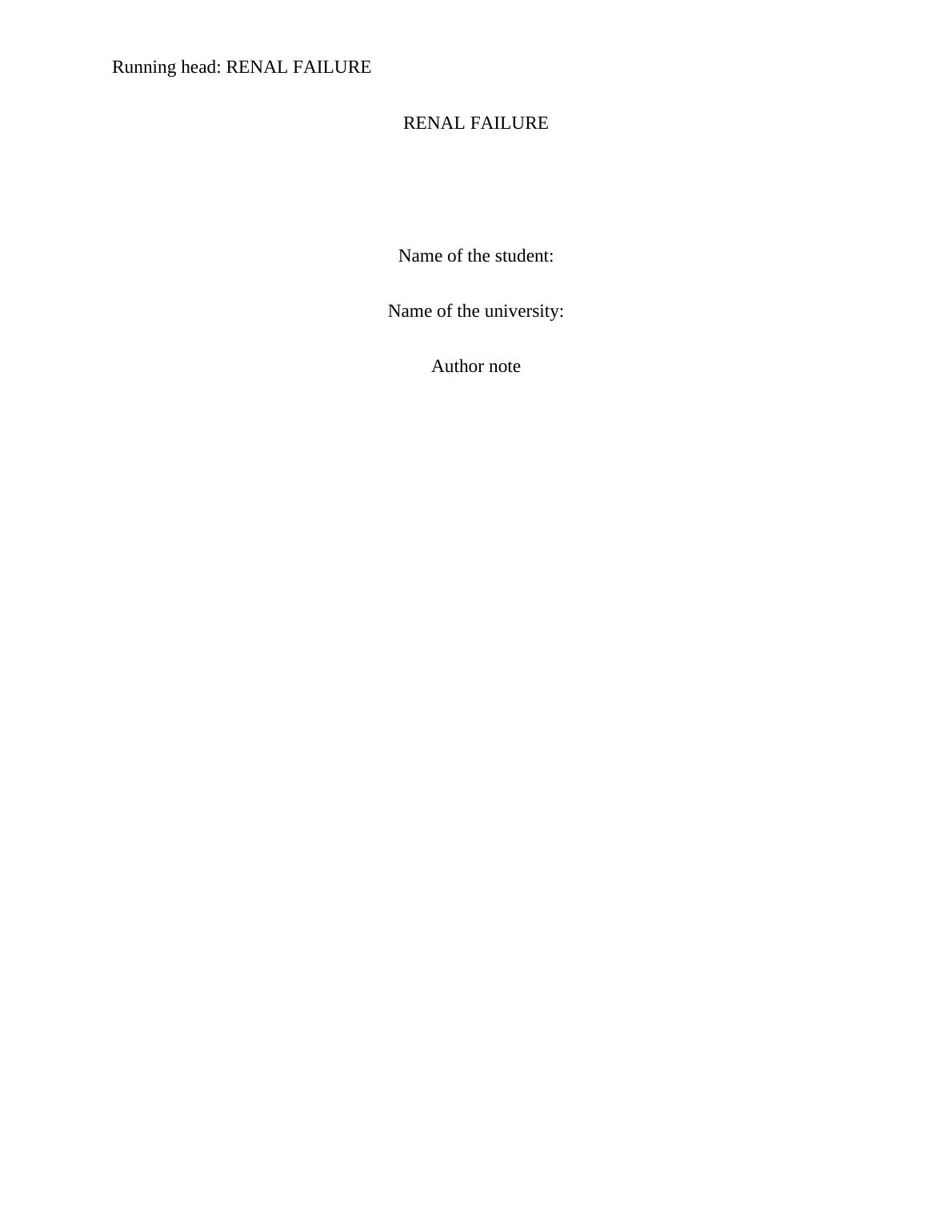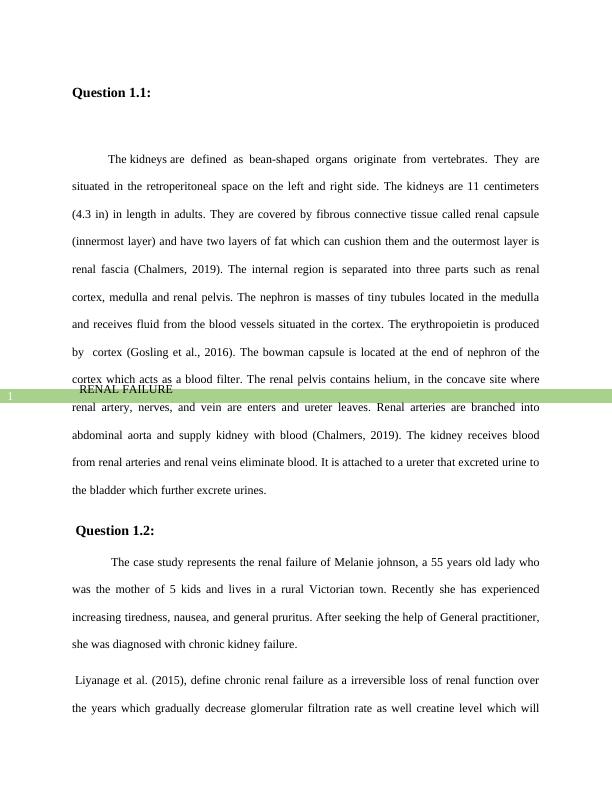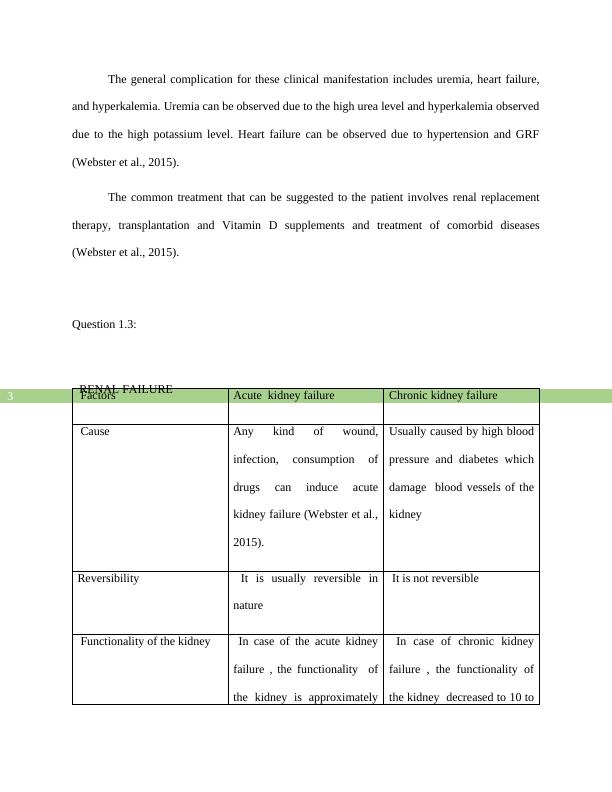Understanding Renal Failure: Causes, Symptoms, and Treatment
Case Scenario: Total marks /100 Comprehensive High Moderate Minimal Limited Part 1.1 10% An excellent and concise A good and concise Adequate description of description of the renal description of the renal the renal anatomy and anatomy and physiology anatomy and physiology physiology Part 1.2 20% An excellent description of the pathophysiology of Melanie's medical condition. An excellent discussion of pathogenesis, complications and/ or treatment options. Clear links to Melanie's case. A good description of Adequate description of Poor description of the the pathophysiology of the pathophysiology of pathophysiology of Melanie's medical Melanie's medical Melanie's medical condition. A thorough condition. Adequate condition but accurate. discussion of discussion of pathogenesis, Poor discussion of pathogenesis, complications and/ or pathogenesis, complications and/ or treatment options. Clear complications and treatment options. Clear links to Melanie's case. treatment options. Poor links to Melanie's case. links to Melanie's case. Lack of understanding of No discussion Melanie's medical condition demonstrated. Poor or absent discussion of pathogenesis, complications and/ or treatment options, no links to Melanie's case. Part 1.3 5% Excellent differentiation between ARF and CRF in students own words (at least 6
Added on 2022-12-28
About This Document
Understanding Renal Failure: Causes, Symptoms, and Treatment
Case Scenario: Total marks /100 Comprehensive High Moderate Minimal Limited Part 1.1 10% An excellent and concise A good and concise Adequate description of description of the renal description of the renal the renal anatomy and anatomy and physiology anatomy and physiology physiology Part 1.2 20% An excellent description of the pathophysiology of Melanie's medical condition. An excellent discussion of pathogenesis, complications and/ or treatment options. Clear links to Melanie's case. A good description of Adequate description of Poor description of the the pathophysiology of the pathophysiology of pathophysiology of Melanie's medical Melanie's medical Melanie's medical condition. A thorough condition. Adequate condition but accurate. discussion of discussion of pathogenesis, Poor discussion of pathogenesis, complications and/ or pathogenesis, complications and/ or treatment options. Clear complications and treatment options. Clear links to Melanie's case. treatment options. Poor links to Melanie's case. links to Melanie's case. Lack of understanding of No discussion Melanie's medical condition demonstrated. Poor or absent discussion of pathogenesis, complications and/ or treatment options, no links to Melanie's case. Part 1.3 5% Excellent differentiation between ARF and CRF in students own words (at least 6
Added on 2022-12-28
End of preview
Want to access all the pages? Upload your documents or become a member.




